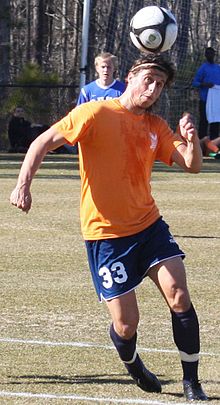오소넥티다
Orthonectida| 오소넥티다 | |
|---|---|
 | |
| 두 개의 서로 다른 암컷 직교체 | |
| 과학적 분류 | |
| 왕국: | 애니멀리아 |
| 서브킹덤: | 우메타조아 |
| Clade: | 파라호소조아목 |
| Clade: | 빌라테리아 |
| Clade: | 네프로조아목 |
| (순위 미지정): | 원생동물 |
| (순위 미지정): | 스파이럴리아 |
| Clade: | 편평동물 |
| (순위 미지정): | 중생대 |
| 문: | 오소넥티다 지아드, 1877 |
| 종. | |
Orthonectida(/ˌːrθnɛktɪd,, -ooʊ-/)[3]는 해양[4] 무척추동물의 잘 알려지지 않은 기생충으로 이루어진 작은 문이다.이 문들의 구성원들은 직각류라고 알려져 있다.
생물학
성충은 성세포 덩어리를 둘러싸고 있는 섬모 모양의 외부 세포 층으로 구성된 미세한 벌레 같은 동물이다.그들은 편형동물, 다발성 지렁이, 이매패류 연체동물, 극피동물 등을 포함한 숙주의 몸 안에서 자유롭게 헤엄친다.그들은 남녀가 [5]따로 있는 생식기성 동물이다.
번식을 할 준비가 되면 성체는 숙주를 떠나 수컷의 정자가 암컷의 몸에 침투해 체내 수정을 한다.그 결과 접합자는 새로운 숙주를 찾기 위해 어미에게서 탈출하는 섬모성 유충으로 발전한다.일단 숙주를 발견하면, 애벌레는 섬모를 잃고 세포질 결합형 플라스모디움 애벌레로 발전한다.이것은, 차례로, 다음 세대의 [5][6]성인들이 되는 수많은 개별 세포로 분해된다.
분류
이 문짝은 약 20개의 알려진 종으로 이루어져 있으며, 그 중 로팔루라 오피오코마에가 가장 [4]잘 알려져 있다.문(文)은 분류나 목(目)으로 나뉘지 않고 두 개의 과만 포함하고 있다.
1877년에 처음 [7]분류로 기술되었고 때로는 중생대문의 목으로 특징지어졌지만, 최근의 연구는 직각류가 중생대의 [4]다른 그룹인 마름모꼴과 상당히 다르다는 것을 보여준다.인토시아 리니라는 한 종의 게놈은 [8]염기서열이 분석되었다.이 동물들은 단순 나선형 동물이다.계통수에서 그들의 위치는 아직 결정되지 않았다.게놈 데이터는 이 유기체들이 형태학에 [9]근거해 나선형 동물이라는 이전의 제안을 확인시켜준다.
그것들은 [10][6]아넬리다와 관련이 있는 것으로 보인다.Annelida 중에서 이 분류군은 Clitellata와 [11]가장 밀접한 관련이 있는 것으로 보인다.
알려진 종
직각류
- 로팔루루리아과, 1937년
- 섬모충류
- Ciliocincta akkeshiensis Tajika, 1979 – 일본 홋카이도; 편형동물(터벨라리아)
- Ciliocinta julini (Collery and Mesnil, 1899년)– 북대서양, 폴리케테스
- Ciliocincta sabellariae Kozloff, 1965년 – 미국 워싱턴 주 산후안 제도; 폴리카에테(Neosabellaria sementarium)
- 인토시아
- 편형동물(렙토플라나)의 Intoshia 렙토플라네 Giard, 1877–E 북대서양
- Intoshia linei Giard, 1877 – 북대서양, 네메르틴(Lineus) = 로팔루라 리니
- Intoshia major Shtein, 1953년 – 북극해; 복족동물(Lefeta, Natica, Solariella) = 로팔루라 major
- Intoshia metchnikovi (Collery & Mesnil, 1899)– 북대서양, 폴리케트 및 네머틴
- 편형동물(Acoela)의 Intoshia parapanostomae(Westblad, 1942년)– 북대서양, 편형동물(Acoela
- Intoshia variabili (Alexandrov & Sljusarev, 1992년) - 편형동물 북극해(Macrohynchus)
- 로팔루라
- Rhopalura longata Shtein, 1953 – 북극해, 이매패류(아스타르테)
- 로팔루라기가스 (Giard, 1877)
- Rhopalura granosa Atkins, 1933–E 북대서양, 이매패류(Podododesmus)
- 로팔루라 인토시 메츠니코프 – 지중해, 네메르티네주
- 복족류(Lefeta, Natica, Solariella)의 Rhopalura litoralis Shtein, 1953– 북극해
- 로팔루라장조 슈테인, 1953년
- Rhopalura murmanica Shtein, 1953 – 복족류 북극해(Risoa, Columbella)
- 로팔루라 오피오코매 지아드, 1877–E 북대서양, 오피우로이드(통상 암피폴리스)
- Rhopalura pelseneeri Caulery & Mesnil, 1901– E 북대서양, 폴리케테스 및 네메르틴
- Rhopalura philinae Lang, 1954 – 북대서양, 복족류
- Rhopalura pterocirri de Saint-Joseph, 1896 – 북대서양, 폴리케테스
- 로팔루라버미큘리콜라
- 스토아카루무
- 슈토카츠루부레소니 코즐로프, 1993년
- 수양목 코즐로프, 1993년
- Stoecharthrum giardi Caulery & Mesnil, 1899 – 북대서양, 폴리케테스
- Stoecharthrum monaty Kozloff, 1993– 북대서양 연체동물
- 섬모충류
- 멧돼지과 멧돼지과
- 펠마포스파에라속
- Pelmatospaera polycirri Caulery and Mesnil, 1904 – E 북대서양, 폴리케테스 및 네메르틴
- 펠마포스파에라속
레퍼런스
- ^ H. Furuya & J. van der Land (2010). "Orthonectida". World Register of Marine Species. Retrieved January 12, 2011.
- ^ "Orthonectida Giard, 1877". Integrated Taxonomic Information System. Retrieved January 12, 2011.
- ^ "Orthonectida". Oxford Dictionaries UK English Dictionary. Oxford University Press. n.d. Retrieved 2016-01-21.
- ^ a b c Hanelt, B; Van Schyndel, D; Adema, C. M; Lewis, L. A; Loker, E. S (1996). "The phylogenetic position of Rhopalura ophiocomae (Orthonectida) based on 18S ribosomal DNA sequence analysis". Molecular Biology and Evolution. 13 (9): 1187–91. doi:10.1093/oxfordjournals.molbev.a025683. PMID 8896370.
- ^ a b Robert D. Barnes (1982). Invertebrate Zoology. Philadelphia, PA: Holt-Saunders International. pp. 247–248. ISBN 0-03-056747-5.
- ^ a b Zverkov, Oleg A.; Mikhailov, Kirill V.; Isaev, Sergey V.; Rusin, Leonid Y.; Popova, Olga V.; Logacheva, Maria D.; Penin, Alexey A.; Moroz, Leonid L.; Panchin, Yuri V.; Lyubetsky, Vassily A.; Aleoshin, Vladimir V. (24 May 2019). "Dicyemida and Orthonectida: Two Stories of Body Plan Simplification". Frontiers in Genetics. 10: 443. doi:10.3389/fgene.2019.00443. PMC 6543705. PMID 31178892.
- ^ Alfred Mathieu Giard (1877). "Sur les Orthonectida, classe nouvelle d'animaux parasites des Échinodermes et des Turbellariés" [On Orthonectida, a new class of parasitic animals of Echinoderms and Turbellarians]. Comptes Rendus (in French). 85 (18): 812–814.
- ^ Mikhailov, Kirill V; Slyusarev, Georgy S; Nikitin, Mikhail A; Logacheva, Maria D; Penin, Aleksey A; Aleoshin, Vladimir V; Panchin, Yuri V (2016). "The Genome of Intoshia linei Affirms Orthonectids as Highly Simplified Spiralians". Current Biology. 26 (13): 1768–74. doi:10.1016/j.cub.2016.05.007. PMID 27374341.
- ^ Sliusarev, G. S (2008). "Тип ортонектида (Orthonectida): строение, биология, положение в системе многоклеточных животных" [Phylum Orthonectida: Morphology, biology, and relationships to other multicellular animals]. Zhurnal Obshchei Biologii (in Russian). 69 (6): 403–27. PMID 19140332.
- ^ Bondarenko, N.; Bondarenko, A.; Starunov, V.; Slyusarev, G. (8 March 2019). "Comparative analysis of the mitochondrial genomes of Orthonectida: insights into the evolution of an invertebrate parasite species". Molecular Genetics and Genomics. 294 (3): 715–727. doi:10.1007/s00438-019-01543-1. PMID 30848356. S2CID 71716789.
- ^ Slyusarev, George S.; Starunov, Viktor V.; Bondarenko, Anton S.; Zorina, Natalia A.; Bondarenko, Natalya I. (April 2020). "Extreme Genome and Nervous System Streamlining in the Invertebrate Parasite Intoshia variabili". Current Biology. 30 (7): 1292–1298.e3. doi:10.1016/j.cub.2020.01.061. PMID 32084405.


